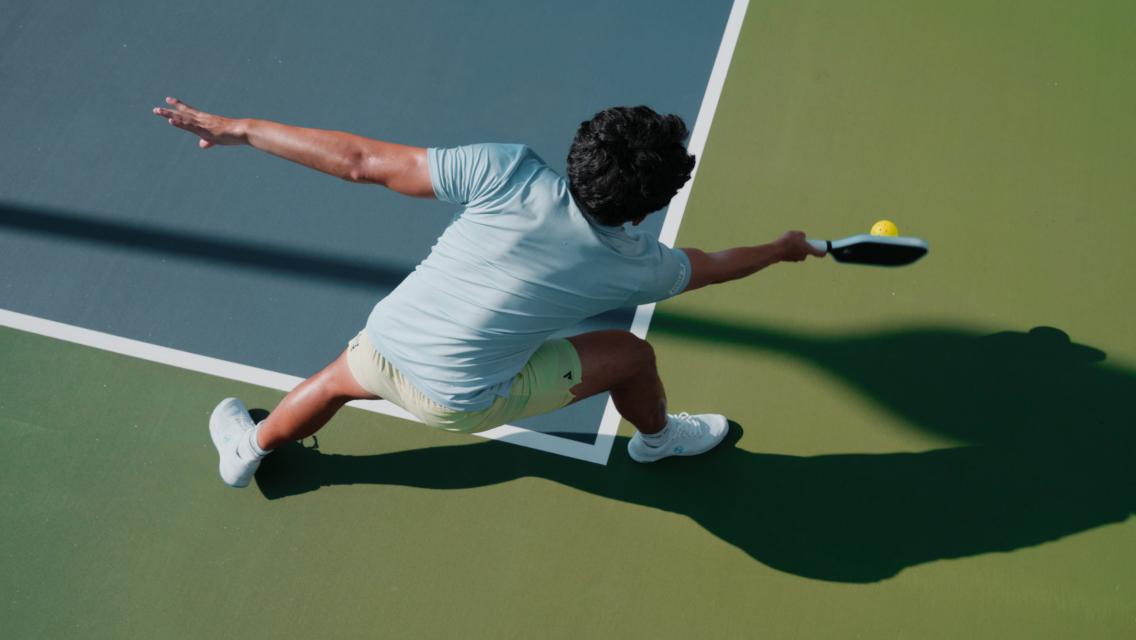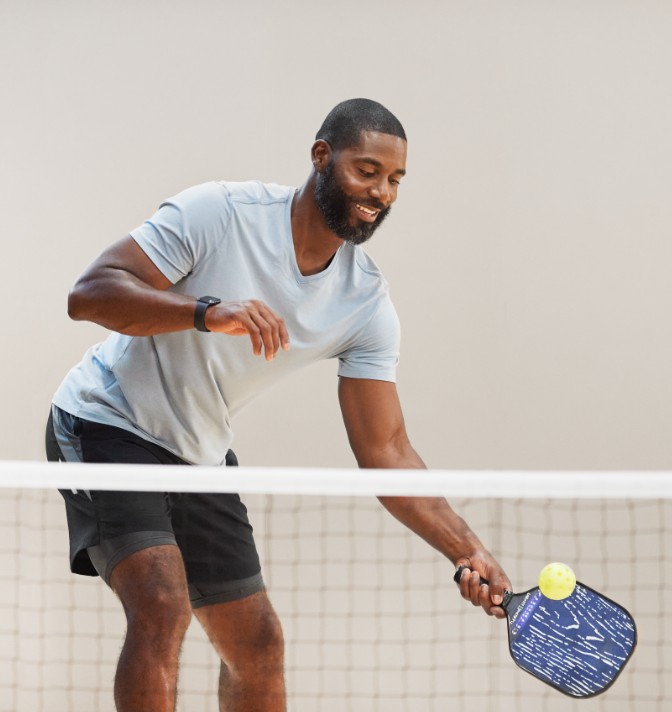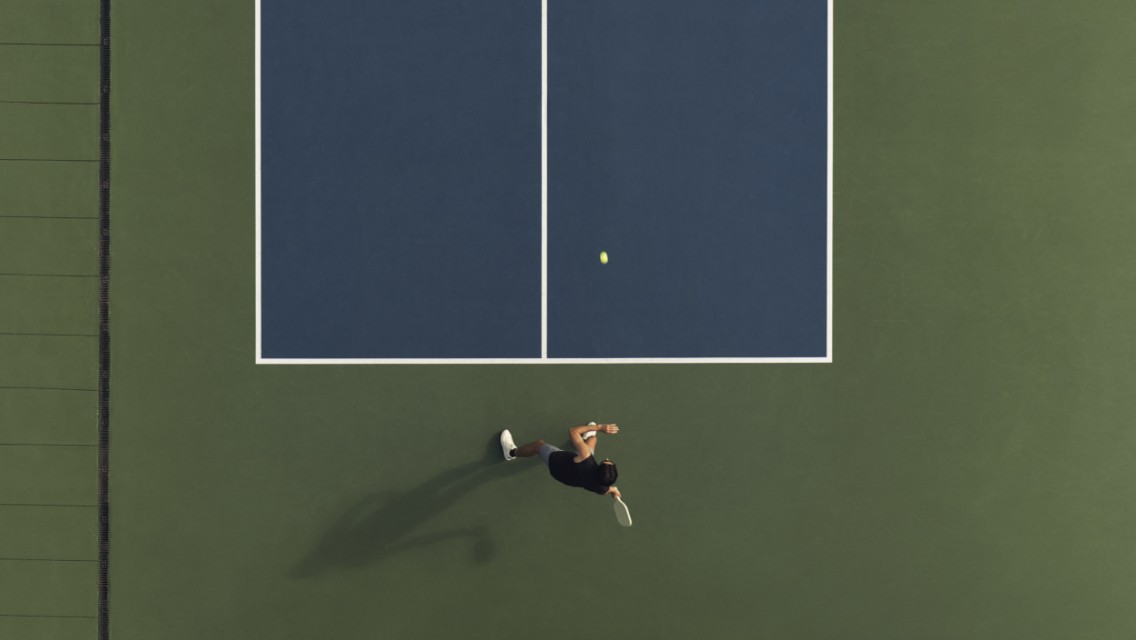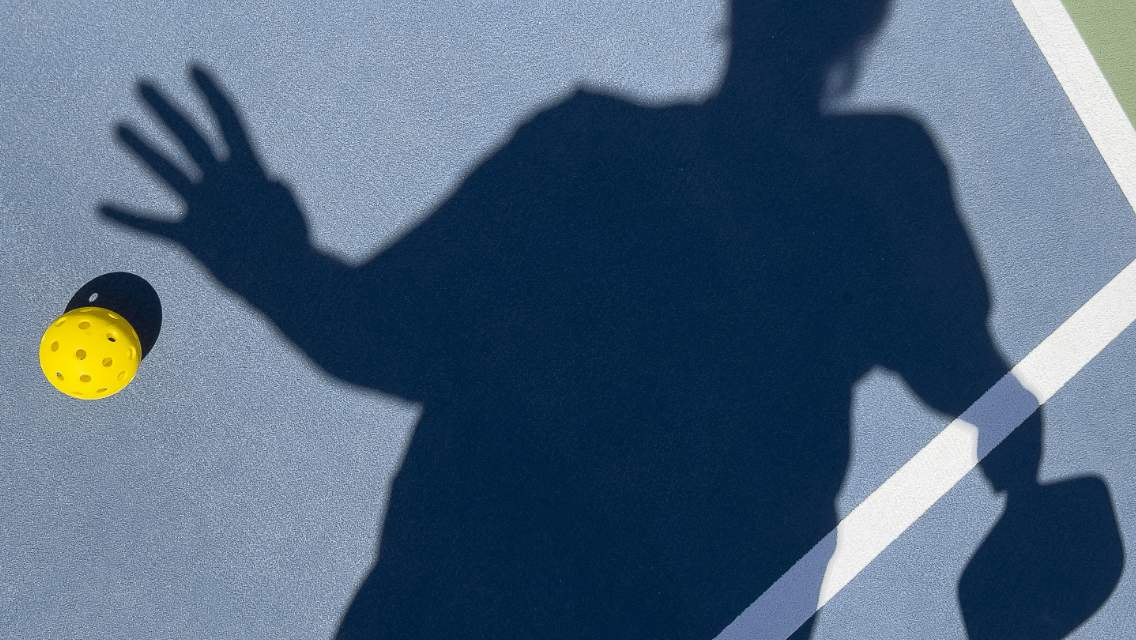The traditional way of playing pickleball is doubles — two-on-two is an easy way to learn the game when starting out, plus it’s social. But experts say singles pickleball — or playing one-on-one — is where they’re starting to see the level of the game grow in players’ skills and abilities, the level of challenge, and overall excitement, especially at an elite level.
“Singles pickleball is more physically demanding than doubles,” says Max Green, lead pickleball pro at Life Time PENN 1 in New York, N.Y. “Points are shorter but more intense, with both players sprinting to the kitchen and around the baseline to cover the court.”
Singles pickleball often favors former tennis players, Green notes, due to the number of shots and aggressive baseline points. There also tends to be less emphasis on soft game and more weight on speed and power.
“Playing one-on-one pickleball is an excellent cardiovascular workout and gets your heart rate up more than doubles does,” says Green. “The independence on the court is also something that people gravitate toward because they’re in full control of the match.” Singles play can improve stamina, footwork, and shot accuracy.
If you’re looking to improve your singles pickleball skills, Green provided seven drills to try, all of which can be performed with a ball machine or a drilling partner.
1. Forehand Target Precision Drill
“This drill works on your precision and the depth of your shot,” says Green.
- Stand across the court from a ball machine or a partner.
- When the ball comes to you, use your forehand to hit the ball crosscourt three times in a row.
- Then, hit the ball down the line three times in a row, continuing to use your forehand.
- Repeat as many times as you’d like.
2. Backhand Target Precision Drill
“This drill is similar to the forehand target precision drill except we are focusing on our backhand,” says Green. “It’s important to work on both because they are two separate shots. In a singles match, you’ll be hitting forehand and backhand shots throughout the game.”
- When the ball comes to you, use your backhand — both hands gripping the paddle — to hit the ball crosscourt three times in a row.
- Then, hit the ball down the line three times in a row, continuing to use your backhand.
- Repeat as many times as you’d like.
3. Kitchen Movement Drills
“These drills focus on improving your lateral movement across the kitchen line, while also helping to improve your speed,” says Green. “There’s a ton of lateral movement in singles pickleball as you move across the kitchen to cover passing shots hit by your opponent.”
Right Side of Court
Left Side of Court
- Stand at the kitchen line with a ball machine that’s able to oscillate or a partner across the court on the baseline of the right side of the court.
- Move laterally at the kitchen line to receive the drops the ball machine or your partner hits to you. Work on sticking volleys and keeping them deep.
- Receive at least 10 balls.
- Move the ball machine, or have your partner move, to the left side of the court, staying on the baseline.
- Repeat the drill for three to five minutes on each side of the court.
4. Serving Drill
“Serves and returns are crucial in singles pickleball because most points are won or lost on serves and returns,” says Green. “Setting targets to practice depth on serves is a great way to improve.”
- From the right side of the court, practice serving across the court to a partner or target. Focus on the depth and power of your serve.
- Continue practicing through an entire bucket of balls.
5. Serve Receive Drill
“It’s crucial to hit effective returns in pickleball, otherwise you’re at risk to start the point at a disadvantage,” says Green. “We want to practice hitting deep returns to keep the opponent back and to give yourself more time to advance to the kitchen.”
- Stand a few feet behind the baseline and prepare for a serve to come from a partner or ball machine (Green recommends using a partner for this drill if possible).
- Stay low and keep your contact point in front of your body as you return the serve back to your partner or ball machine.
- Repeat as many times as you’d like or aim to work through one bucket of balls.
6. Footwork Ladder Drills
“This drill works on foot speed and agility,” says Green. “It also enhances the speed at which you can change direction which is crucial for singles pickleball.”
- Set out a flat exercise ladder.
- Hop on one foot down the whole ladder.
- Hop on your opposite foot on the way back.
- Next, hop with both feet inside of the ladder, then outside of it, continuing for the length of the ladder.
- On the way back, hop with both feet inside every square of the ladder.
- Next, step quickly in each square of the ladder, swiftly alternating your right and left foot before moving onto the next square.
- On the way back, move side-to-side through each square, placing one foot in the square and then outside of it as you move the other foot in, moving that foot out as you’re transitioning to the next square.
7. Footwork Ladder Drills with a Pickleball Paddle
“These drills are similar to the previous ladder drill except we’re now incorporating swinging volleys,” says Green. “Focus on multitasking between the footwork and hand-eye coordination.”
- Start on one side of the ladder and move laterally through one square as you move to the other side of the ladder to receive a ball with a forehand hit.
- Move laterally to the other side of the ladder through the next square and receive a ball with a backhand hit.
- Repeat this for the length of the ladder.
- Quickly shuffle your feet several times before moving laterally through one square of the ladder to the opposite side to receive a ball with a forehand hit.
- Quickly shuffle your feet several times again before moving laterally to the other side of the ladder through the next square, receiving a backhand hit.
- Repeat this for the length of the ladder.





